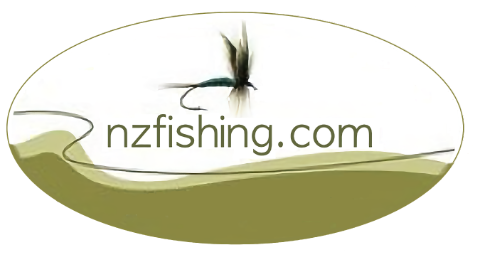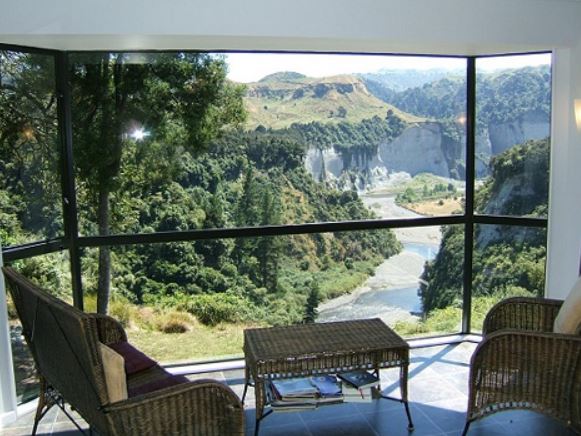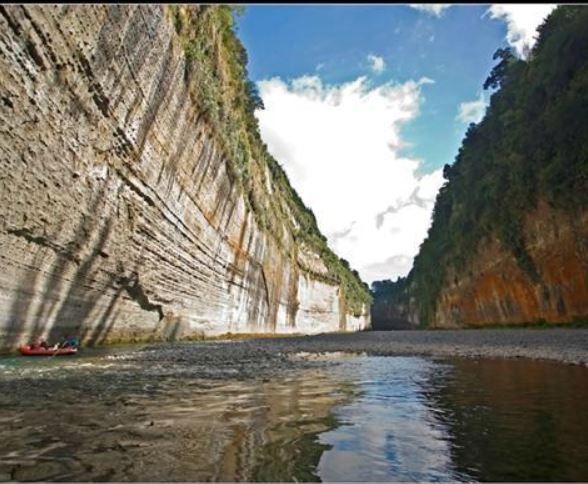| Water Conservation Order |
The Rangitikei Water Conservation Order (WCO) was passed in 1993 and recognises the river's outstanding wild and scenic characteristics, recreational fisheries and wildlife features. Part of the river featured in Peter Jackson's movie The Lord of the Rings: The Fellowship of the Ring.
To read the full legislation document for the WCO applied to this waterway click here |
| Fish type |
Both rainbow and brown trout throughout the river system with fish in the upper reaches reaching trophy size (i.e. over 4.5 kg) with the average through the rest of the system being around 1.5 to 2 kg. Fish numbers are good throughout the system though there are fewer fish per kilometre in the upper reaches. This is made up for by the quality and size of the fish being larger in this section. |
| Situation |
The Rangitikei river flows from the Kaimanawa Forest Park through the bush clad hills in the upper reaches and over more accessible open land through the middle reaches (though some areas are also restricted by steep gorges) and then finally becoming a slower moving large river before entering the Tasman Sea west of Palmerston North. |
| Maps |
Upper Rangitikei access map
Mid Rangitikei access map
Lower Rangitikei access map
|
| Check conditions |
View the river flow.
View the MetService weather forecast.
|
| Description |
While there are trout throughout the entire river system, the Rangitikei River is best known for the superb fishing that it offers in the remote wilderness section of its headwaters. The headwaters provide top-quality fly fishing water for double figure fish (i.e. over 10 pounds or 4.5 kg) in crystal clear water that seldom discolours even after heavy rain. The middle section is generally more accessible although in some areas the river flows through steep gorges, making access very difficult. The lower section, though mostly easily accessible, is of less interest to the angler as it is slower moving and generally carries some colour (though it does offer good spin fishing for a good population of trout that reside there). |
| Upper reaches |
Description (Above Ohinewaione Stream Confluence)
A backcountry licence obtainable free of charge from Wellington Fish and Game is required to fish this section.
When most people think of fishing the Rangitikei River, they associate it with the fishing in the pristine headwaters found in the remote Kaimanawa Forest Park. Despite being the headwaters, the Rangitikei in the upper reaches is still a reasonable sized river. The water is very clear and although wadeable in places there are large sections of very deep water. The riverbed is made up of rock and stone and great care should be taken when crossing as the water volume is stronger than it appears and the riverbed can be very slippery. Trout can usually be sighted feeding along the length of any pool though of course as the water is so clear the fish can also see the angler and consequently are easily spooked.
The Rangitikei and its headwaters is regarded as one of the premier fisheries in New Zealand. Although the average size of the fish has diminished and the numbers of
double figures (i.e. over 10 pounds or 4.5 kg) has declined in recent years, it is still a beautiful area to visit and fish. It is however rugged and the weather can be atrocious
at times so care should be taken by any visitor into this area.
A backcountry licence is required to fish the upper reaches of the Rangitikei River and the Whakaurekou tributary. This is free of charge to whole season licence holders and can be obtained from Wellington Fish and Game.
Access
There are only two ways to get into the upper reaches of the Rangitikei river and that is either a two-day walk or by taking a helicopter.
See the Upper Rangitikei River access map.
|
| Middle reaches |
Description
As several other streams and rivers join the Rangitikei River, it is a much larger river in its middle reaches. There can several stretches that are difficult to fish because of gorges making access difficult. The river here carries more colour and runs over a shingle, rock and pebble bed. It is mostly a series of pools, long glides and enticing riffles. Fish in this section average around 1.5 kilograms although fish up to 3 kg are relatively common. It is a popular area to fish.
See the mid Rangitikei River access map.
|
| Lower reaches |
Downstream from the township of Bulls, the river widens yet again and becomes a large river. It holds good stocks of fish and is mostly of interest to the spin fisherman.
See the Lower Rangitikei River access map. |
| Methods |
The most popular and productive method is using a nymph although there is plenty of opportunity for the wet fly fisherman and those wishing to pursue trout with a dry fly. There is also excellent spinner fishing opportunities throughout the length of this river. |
| Recommended tackle |
In the upper reaches where the water is very clear, a balance must be sought between using light enough tackle so as not to spook the fish but yet retaining enough power to land the large fish in the strong current. It is recommended that a 9 foot (or even shorter rod) with around a weight five line is used.
In the middle and lower reaches, rods around 9 foot in weights six to seven are favoured. Use spinning gear with around 3 kg/6 pound nylon and capable of casting lures of 7 g to 10 g. |
| Recommended lures |
Nymphs:
Dark weighted nymph patterns in sizes 12 to 16 such as Hare and Copper, Pheasant Tail, Prince Nymphs and Halfbacks all work well, particularly in the upper reaches.
Dry flies:
During the summer large size 10 to 12 flies fished over the faster water can be very effective. Dry Royal Wulff, cicada patterns, Parachute Adams, Humpy and beetle and cricket patterns.
Wet flies/ Streamers:
Small wet flies such as Invicta, March Brown, Greenwell's Glory, Grouse and Claret and Mallard work well, particularly in the evening when fish are taking emerger patterns just sub-surface. When fishing deeper try Hamill's Killer, Mrs Simpson or Red Setter.
Spinners: In the lower reaches larger spinners such as a tri-colour Zed Spinner, Black and Gold Toby or a rapala pattern work well although in the upper reaches small bladed spinners such as Veltic or Mepps fished upstream and retrieved near the river bed just faster than the current work well.
|
| Tributaries |
The Rangitikei has a large number of tributaries along its length, many of which are important fisheries in their own right. These include the Mangamarie River, the Moawhango River, the Hautapu River, the Whakaurekou River, the Maropea River, the Kawhatau River and the Mangawhariki River. |
| Regulations (1) |
| Applicable to |
Rangitikei River and its tributaries upstream of its confluence with the Ohinewaione Stream (about 9 river kilometres upstream of the Springvale Bridge) |
| Region |
Wellington region regulations |
| Season |
1 Oct-30 Apr to backcountry licence holders only. There is a $25 charge for this licence. |
| Methods |
Artificial fly, spinner |
| Bag limit |
1 trout |
| Size limit (cm) |
550mm maximum. Any fish larger than 550mm must be returned unharmed to the water. |
| Regulations (2) |
| Applicable to |
Rangitikei River upstream from the Matawhero Road Bridge (commonly called the Mangaohane Bridge) up to its confluence with the Ohinewaione Stream (about 9 river
kilometres upstream from the Springvale Bridge) |
| Region |
Wellington region regulations |
| Season |
1 Oct-30 Apr |
| Methods |
Artificial fly, spinner |
| Bag limit |
2 trout |
| Size limit (cm) |
550mm maximum. Any fish larger than 550mm must be returned unharmed to the water. |
| Regulations (3) |
| Applicable to |
Rangitikei River downstream from the Matawhero Road Bridge (commonly called the Mangaohane Bridge) |
| Region |
Wellington region regulations |
| Season |
All year |
| Methods |
Artificial fly, spinner, bait |
| Bag limit |
4 |
| Size limit (cm) |
None |




